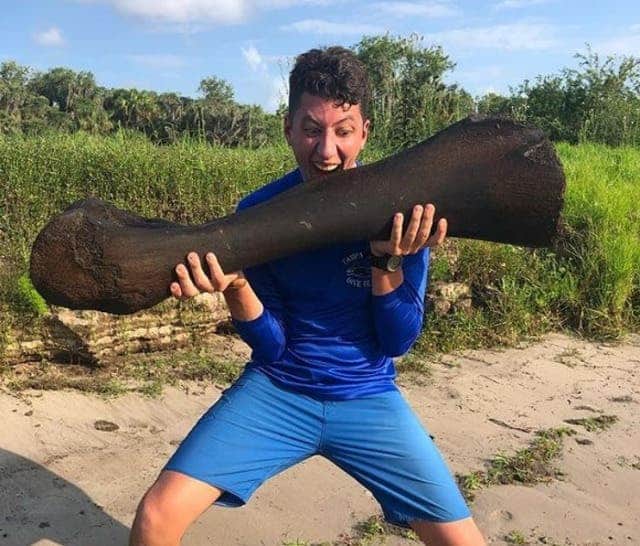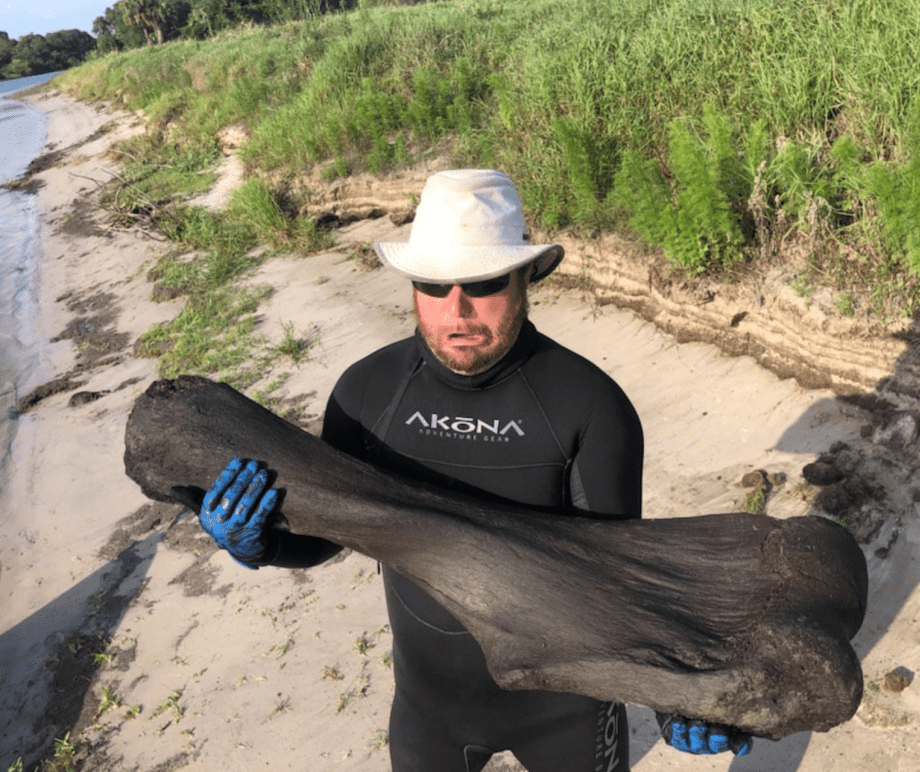A 50-pound fossilized bone that initially belonged to a Columbian mammoth was discovered by a pack of amateur paleontologists last week while they were scuba diving in the Peace River in Arcadia, Southwest Florida.


The Orlando Sentinel first reported on the discovery of the bone by Derek Demeter and Henry Sadler. It weighs around 50 pounds, is 4 ft (1.21 m) in length, is currently believed to date back to the ice age, and belongs to one of the last mammoth species to roam North America.
Big Boned
“When I saw it, I couldn’t believe it. I was in denial. It was really neat to see that be discovered,” Demeter, the planetarium director at Seminole State College, told The Orlando Sentinel. “[Henry] came up, and he’s like, ‘Derek, I found something amazing,’ and he’s just freaking out.”
Although not yet properly examined, the bone — a humerus — seems to correspond to those of Columbian mammoths. This species’ habitat ranged from current-day Costa Rica to the northern U.S., where they roamed between 2.6 million and 10,000 years ago.
It was one of the last species of mammoth to live on Earth.
But let’s get back to our day. The lucky duo found several other bones on the same day. These include parts from an extinct shark lineage and the tooth of a saber-toothed tiger. Not ones to let their luck go to their heads, Henry and Derek donated these to the Florida Museum of Natural History, where they can be examined and displayed for the public to enjoy. The mammoth bone, however, they kept; it will be displayed in a local classroom, to accompany Henry — a science teacher at St. Petersburg’s Admiral Farragut Academy — while he teaches his classes.
“It’s currently sitting in the classroom where the kids are able to see it, touch it, feel it and really get a history of the natural world,” Sadler said.
This story goes to show that if you’re willing to pay attention to the environment around you, you might just be rewarded with some astonishing findings. Now, finding fossils thousands of years old just laying around on the floor probably isn’t very likely, but, objectively speaking, the odds are never quite zero. So don’t lose heart!









